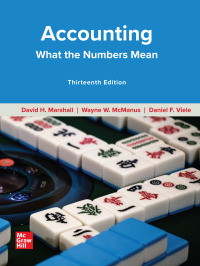For the following transactions. a. Sold 1,700 shares of $50 par value preferred stock at $52.50 per
Question:
For the following transactions.
a. Sold 1,700 shares of $50 par value preferred stock at $52.50 per share.
b. Declared the annual cash dividend of $4.10 per share on common stock. There were 9,300 shares of $1 par value common stock issued and outstanding throughout the year.
c. Issued 2,500 shares of $50 par value preferred stock in exchange for a building when the market price of preferred stock was $54 per share.
d. Purchased 700 shares of preferred stock for the treasury at a price of $56 per share.
e. Sold 250 shares of the preferred stock held in treasury (see d) for $57 per share.
f. Declared and issued a 15% stock dividend on the $1 par value common stock when the market price per share was $36.
Part I. Show the effect (if any) of each of the above transactions on each financial statement category by selecting a plus (+) or minus (-) sign and the amount in the appropriate column do not show items that affect net income in the retained earnings column.
Do not show items that affect net income in the retained earnings column. (For the Treasury Stock column related to transactions d and e, enter the effect as it relates to Treasury Stock and not to the right-side of the accounting equation. For example, if the transaction causes an increase in Treasury Stock by $20,000, then enter the effect as +20,000.)
Part II. Prepare the journal entries to record each of the above transactions.
Common StockCommon stock is an equity component that represents the worth of stock owned by the shareholders of the company. The common stock represents the par value of the shares outstanding at a balance sheet date. Public companies can trade their stocks on... Dividend
A dividend is a distribution of a portion of company’s earnings, decided and managed by the company’s board of directors, and paid to the shareholders. Dividends are given on the shares. It is a token reward paid to the shareholders for their... Par Value
Par value is the face value of a bond. Par value is important for a bond or fixed-income instrument because it determines its maturity value as well as the dollar value of coupon payments. The market price of a bond may be above or below par,...
Step by Step Answer:






